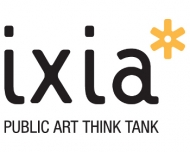ixia's Public Art Survey 2013: Key Findings
Date uploaded: February 26, 2014
Despite a fall in jobs and fees, overall funding in the public art sector increased slightly during 2013. Recovery in the housing and development sectors and the use of national planning policies and guidance that promote public art began to generate new opportunities at a local level, which will filter through to artists over the coming years.
During autumn 2013, ixia undertook its third public art survey. As in previous years, the dominant characteristic of the sector was its non-institutional and fragmented structure: encompassing a variety of disciplines; involving a diverse range of public and private sector organisations; embracing a wide range of work/employment contexts; and being subject to varying degrees of economic lag, which makes quantitative analysis challenging.
The key findings of the survey are:
- The public art sector’s overall value increased slightly from £55m in 2012 to £58m in 2013, although there was a fall in jobs and fees.
- The main driver for public art continued to be private sector money aligned to public sector policy, especially the planning system. Over the three years from 2011 to 2013, we estimate that the overall value of the public art sector was around £167m, of which £90m was raised via the capital budgets and planning agreements generated by local authorities. During 2013, their spend on public art increased from £29m in 2012 to £37m in 2013.
- The recovery in the housing and development sectors and the inclusion of cultural well-being and public art within national planning policies and guidance began to generate more funding and opportunities for public art at a local level.
- Socially engaged practice and art and architecture remained the most typical forms of public art projects, with outdoor arts and events-based activities showing a steady growth in popularity.
- Overall, the age profile of the workforce continued to increase. Since 2012, those in the 25 to 44 age group decreased from 38% to 35%, whilst those in the 45 to 64 age group increased from 56% to 58%.
- The survey continued to show a predominantly female workforce: 64% female and 36% male (the average from 2011 to 2013 was 63% female and 37% male), with the female age profile being distinctly younger than the male age profile.
Download the full survey report below.

